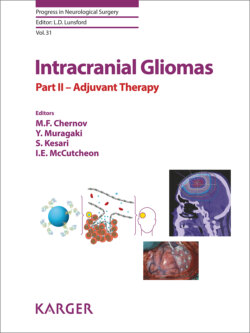Читать книгу Intracranial Gliomas Part II - Adjuvant Therapy - Группа авторов - Страница 41
Conclusions
ОглавлениеNowadays, cell lineage-oriented classification of gliomas no longer appears to satisfy pathological and clinical needs for precise tumor diagnosis, determination of patient prognosis, and prediction of response to therapy. Profiling of the major genetic and/or cytogenetic abnormalities of the neoplasm may provide significant help during decision-making on the optimal treatment strategy for attainment of the best possible outcome. Thus, it seems rational to expect that future pathological classifications of gliomas will continue to consider not only phenotype, but also genotype of the tumor. In such cases, detection of the alterations of IDH1/IDH2, TP53, and 1p/19q has an already established clinical significance, whereas identification of several other genetic abnormalities (e.g., mutations of ATRX and TERT promoter, deletions of CDKN2A, combined +7q/–10q, etc.) may be also of help. In the near future, pathology laboratories will continue the transition toward panel-based assessment of mutations and high-resolution whole-genome analysis of copy number alterations. Nevertheless, the balance between the application of various molecular approaches for pathological diagnosis of brain tumor and the practical needs of daily neuro-oncology practice should be maintained carefully.
